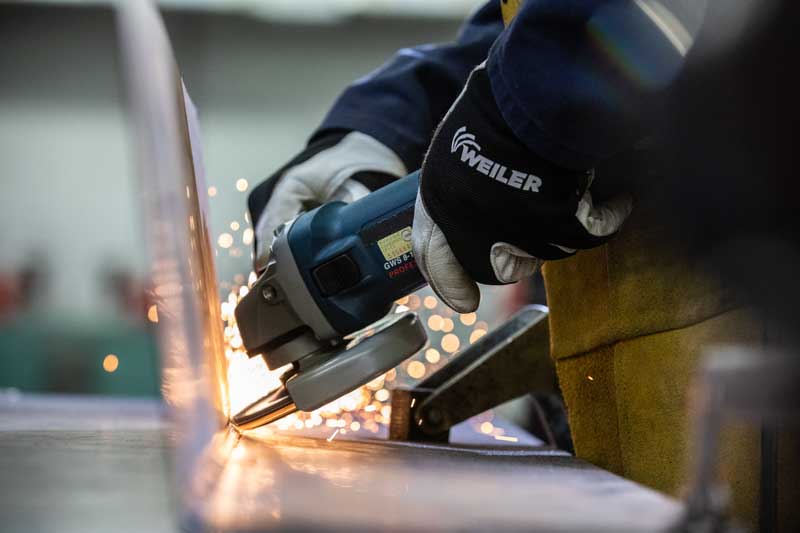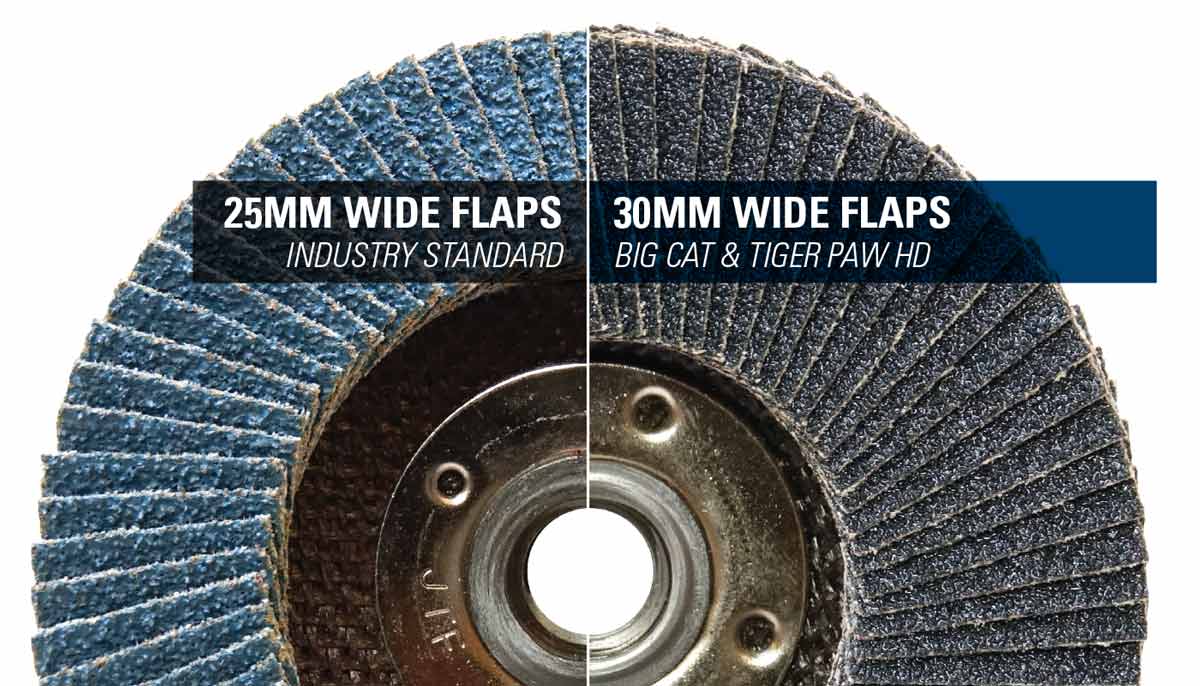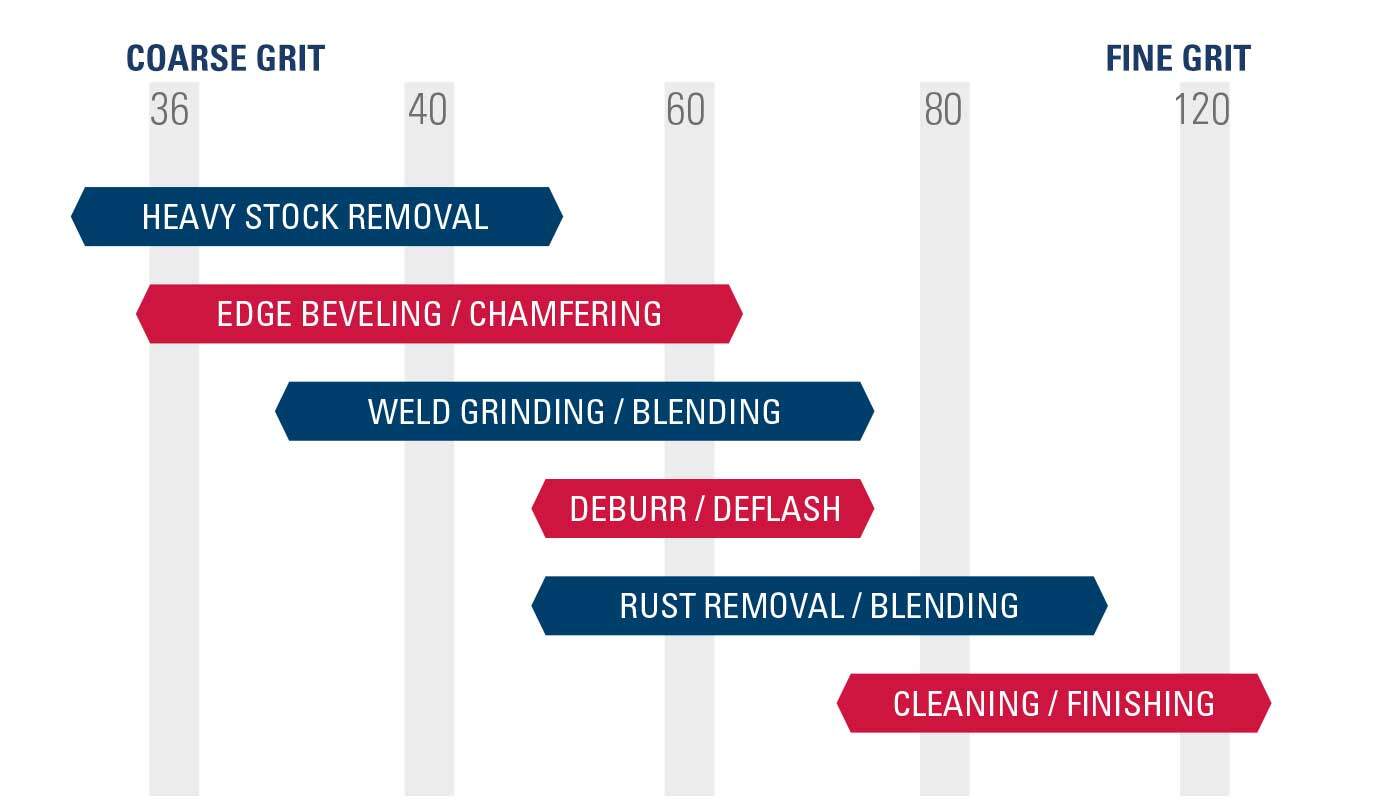Guide to Flap Discs
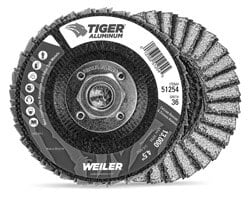
GUIDE TO FLAP DISCS
Many manufacturing applications benefit from the use of a flap disc. In the lineup of surface conditioning tools like cutting and grinding wheels, how are flap discs distinctive?
Flap discs, also known colloquially as flapper wheels, have a design suited for right-angle grinder applications. They provide aggressive stock removal or precise blending and finishing depending on the operator's needs. They offer exceptional versatility, maneuverability and lower vibration and noise levels than grinding wheels.
Flap discs are excellent choices for many applications because they allow the operator to perform grinding and finishing in one efficient time-saving, cost-lowering step. They grind like hard grinding wheels but are easier to control so you reduce the risk of gouging the workpiece, and they remain usable even after an area of abrasive wears out because new abrasive is exposed. They also tend to have a softer feel than grinding wheels, and they reduce the risk of removing too much material from the workpiece with overaggressive grinding.
When a facility is choosing angle grinder flap discs, it's essential to consider factors like shape, material, density and abrasive grain type and size. This guide to flap discs discusses these characteristics and what they mean for flap disc performance.
Choosing the right flap disc
The type of material you are working with is a great place to start when choosing a flap disc. Watch this video to select the best disc for your workpiece.
CHOOSING FLAP DISC SHAPE
In discussing flap discs' shape, we'll first want to consider their structure and composition.
Unlike a standard grinding wheel, which consists of a uniform grinding surface made of abrasive grains bonded in place, a flap disc consists of a ring of overlapping flaps. These flaps hold coated abrasive grains — the same grains used in bonded-abrasive cutting and grinding wheels — that can grind and shape a workpiece during fabrication or blend and finish a weld.
Where cutting and grinding discs often have a fiberglass structure, in flap discs the grains adhere to a backing cloth often made of cotton, polyester or a blend. The abrasive cloth is cut into smaller strips and then layer the strips so they overlap one another to form the flap disc. A rigid back plating provides stability and support.
The two most common types of flap discs are flat discs and conical discs:
- Flat discs:

Flat flap discs, also known as type 27 flap discs, typically grind best at shallower angles between 0 and 15 degrees. They are optimal for smooth finishing and blending on flat surfaces, and they can handle slight contours.
- Conical discs:

Conical flap discs, also known as type 29 flap discs, have a saucer-shaped grinding surface rather than a straight one. They typically grind best at angles between 15 and 35 degrees. They enable aggressive stock removal by maximizing surface contact on flat surfaces.
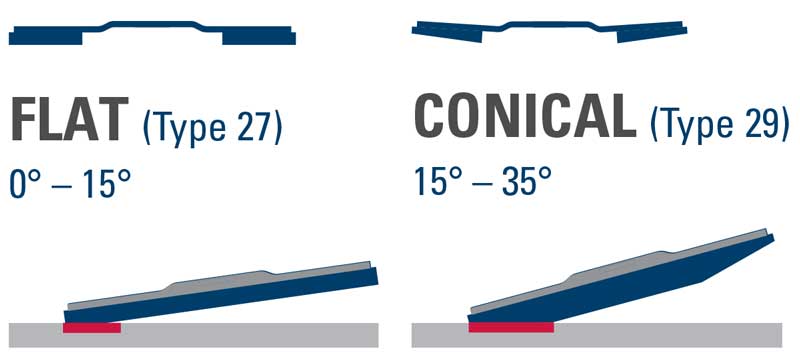
In general, operators should choose conical flap discs for initial high-volume grinding and flat flap discs for precision refinements.
A few specialty shapes and styles are also available:
- Trimmable discs:

Trimmable flap discs differ from other types because they contain a trimmable composite backing that allows the operator to increase flap overhang. When used as intended, these discs offer flexibility and versatility needed for hard-to-reach areas such as fillet welds and irregular shapes. The backings also prevent unwanted marking of the workpiece.
- Aluminum-backed discs:

Flap discs with aluminum backs contain a sturdy, permanent aluminum backing. This backing provides rigorous support in high-stress, heavy-duty applications such as pipeline fabrication.
- Mini discs:


Mini flap discs are significantly smaller than their standard counterparts, only about 2 or 3 inches in diameter. Their compact size makes them ideal for working in tight spaces and grinding hard-to-reach areas on the workpiece. A smaller, 2-inch mini disc can often effectively replace a blending disc as well. These discs contain a composite backing that provides standard support for a range of applications.
- Angled discs:

Angled flap discs have curved flaps that wrap around the edge of the backing plate, facilitating extensive flap-to-metal contact, enhancing operator control and allowing for a wider range of grinding angles. The curved flaps give these discs the contouring capabilities necessary for fillet welds and allow for access hard-to-reach areas for T-joint grinding. They offer the same robust grinding performance on flat surfaces.
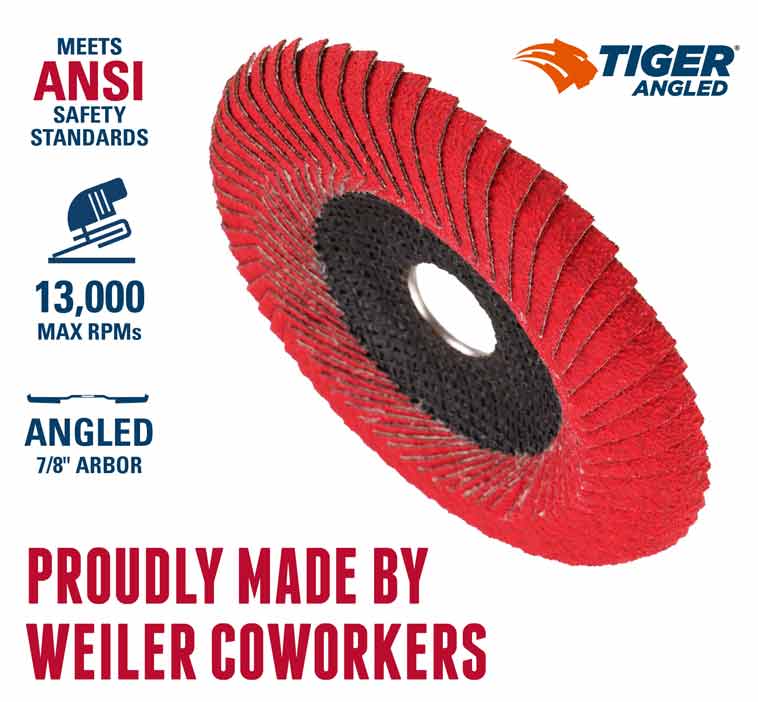
Flap discs also come in a range of sizes, generally from about 4 to 7 inches in diameter, with the mini discs smaller still. Smaller discs are designed for use on die grinders to provide smooth grinding and enhanced conformability in tight areas. will rotate more quickly and provide a faster cut rate, whereas larger discs will rotate more slowly. Larger-diameter wheels contain more abrasive, however, so with the right care, because of their size will cover larger areas and will last longer and provide a higher rate of stock removal over the life of the disc.
Flap disc shapes also differ in the width of the individual flaps. The industry standard for these flaps is about 25 millimeters, and some flap discs, including Weiler Abrasives' Tiger Paw high density and Big Cat discs, contain 30-millimeter flaps instead. The larger flaps provide a more expansive surface area for applications that require aggressive, high-volume grinding.
Choosing the right style
Watch this video to learn about different flap disc styles and which one is right for you.
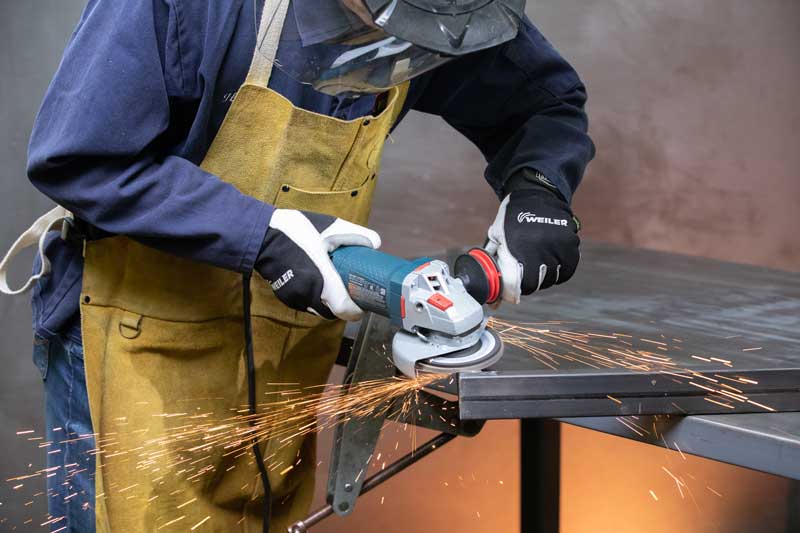
Choosing Abrasive Flap Density
High-density flap discs contain more abrasive cloth material than standard flap discs, so they are thicker and more forgiving. Because of their density, they can conform to irregular surfaces in a way that standard flap discs cannot, so they provide greater control and performance with nonstandard shapes and materials. They may be either type 27 discs or type 29 discs.
-
Type 27:

Type 27 high-density flap discs have the same straight profile associated with flat flap discs, and they contain added thickness. They are ideal for grinding at angles between 0 and 15 degrees. They conform easily to irregular surfaces and provide smooth blending, grinding and finishing on flat surfaces as well.
- Type 29:
-1.png)
Type 29 high-density flap discs have an angled profile associated with conical flap discs. They are ideal for grinding at angles between 15 and 35 degrees. Their density and angled design make them ideal for operators looking for aggressive stock removal while also conforming to irregular workpiece surfaces.
When should a company choose high-density flap discs for its applications? Generally, standard-density flap discs are excellent choices for aggressive stock removal and demanding industrial applications. High-density flap discs, on the other hand, are best suited for curved or uneven surfaces, or for blending and finishing rather than heavy stock removal.
If a long lifespan is a high priority, operators may want to choose high-density flap discs over standard flap discs. Because they contain more material, high-density flap discs last up to 40% longer than standard flap discs under the right operating conditions. They are versatile enough to use on both irregular and flat surfaces, so prioritizing disc life won't mean compromising performance on flat workpieces.
High Density Flap Discs
Watch this video to learn about the advantages high density flap discs can provide in your metalworking project.
Choosing Flap Disc Material
We'll discuss the abrasive grains and their composition a little further on. In this section, let's delve into the different backings a flap disc might have. Common backing materials for flap discs include phenolic resin, aluminum, and composite.
Phenolic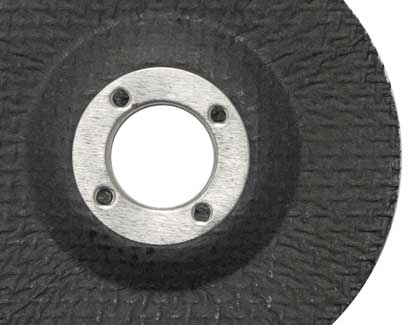
Phenolic is a substance formed through the application of heat and pressure to alternating layers of resin and materials like glass-based fabric. Phenolic is lightweight and wear-resistant, and it is useful for preventing the flap disc and its backing from scratching the workpiece.
Aluminum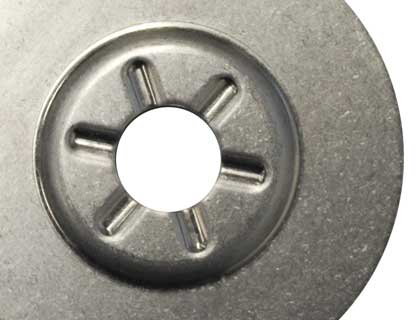
Aluminum backing provides sturdiness and stability for the flap disc in heavy-duty applications. Its rigid support makes it ideal for aggressive grinding applications such as cleaning pits out of bevels, and the smooth aluminum won't catch on the bevel. Aluminum also offers the benefit of recyclability.
Composite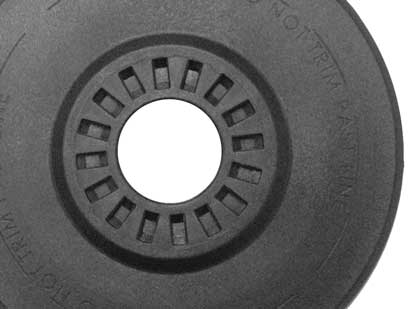
Trimmable composite backing is ideal for preventing marking of the workpiece. Because the trimmable backing allows for small adjustments to the disc's size and shape, composite allows greater access to hard-to-reach areas of the workpiece.
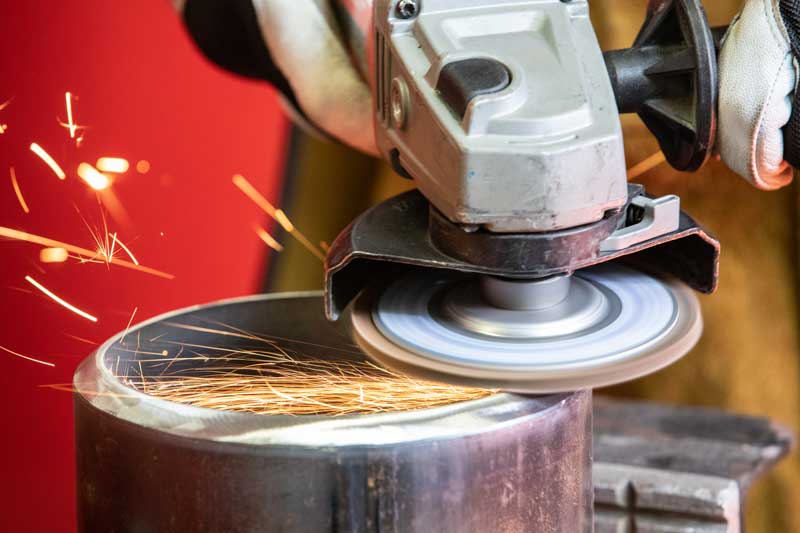
Choosing Abrasive Grit Material
1. CERAMIC ALUMINA
If you are looking for maximum performance in a flap disc, Ceramic is the best option. The ceramic grains micro-fracture as they grind, constantly exposing sharp edges and maintaining a high cut rate for the life of the disc. It is ideal for workpieces made from standard steel, tool steel, armored steel, titanium, Inconel®, high-nickel alloys, stainless steel and aluminum, and it performs exceptionally well on hard-to-grind metals.
In combination with a top coat, ceramic alumina provides a fast cut rate, and a cooler grinding temperature to help protect valuable, heat-sensitive components and prevent heat discoloration on the workpiece. The top coat also helps prevent loading — the accumulation of bits of workpiece material on the flap disc — with soft alloys. Our Tiger Ceramic option is top coated and is also contaminant-free so it will perform exceptionally well on stainless steel.
![]()
-1.jpg)
2. ZIRCONIA ALUMINA
A flap disc made from 100% zirconia alumina allows for aggressive stock removal and high-performance edge grinding. Zirconia alumina is self-sharpening, and it holds up exceptionally well under high temperatures and pressures. With proper use and maintenance, it provides a rapid cut and long lifespan. It is ideal for workpieces made from cast iron, carbon steel, structural steel and stainless steel. If you are looking for a 100% zirconia alumina our Tiger Paw is an excellent choice.
![]()
-1.jpg)
3. CERAMIC ALUMINA/ZIRCONIA ALUMINA BLEND
A blend of ceramic alumina and zirconia alumina provides fast grinding, reliable performance and a long disc life. This grain combination grinds with less effort than many other. Our Tiger X flap disc leverages a contaminant-free blend is ideal for flat surface grinding, particularly on workpieces made from structural steel, carbon steel, stainless steel and cast iron.
![]()
-1.jpg)
4. ALUMINUM OXIDE
A disc made from aluminum oxide has a hard, durable grain and a strong initial cut rate, and it offers fast stock removal and consistent performance. Aluminum oxide is ideal for workpieces made of materials such as steel and cast iron, as well as for all-purpose use. It is not shelf-sharpening, however — its single crystals will dull during use. Overall, it provides a blend of performance and value.
![]()
-1.jpg)
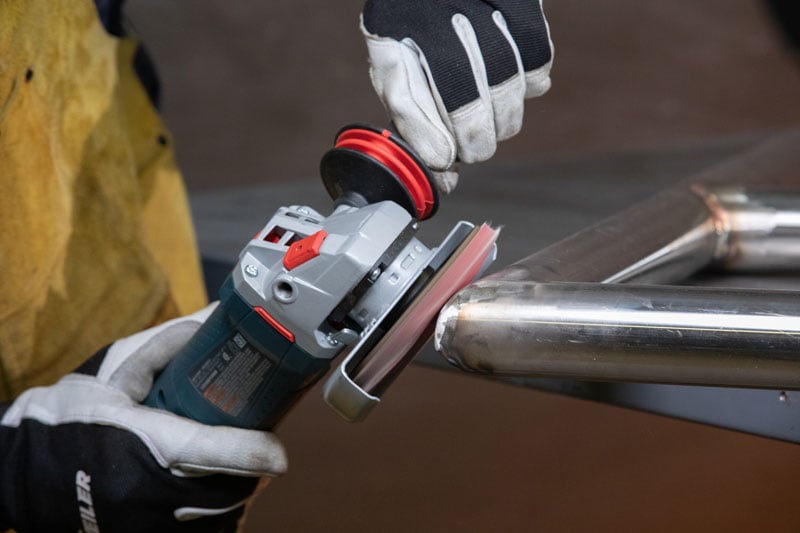
Choosing Abrasive Grit Size For Your Application
Flap disc grains come in an array of sizes, just as sandpaper grains do. The abrasive grains for flap discs typically range from about 36 to 120, with smaller numbers indicating larger, coarser grit and larger numbers indicating smaller, finer grit.

In general, flap discs require coarser grit for initial workpiece shaping and stock removal and finer grit for refinements such as blending, finishing and repairs. Below is a breakdown of what some of these numbers signify for flap disc performance:
- Heavy stock removal: Larger abrasive grit in the 36-to-40 range facilitates heavy-duty operations like heavy stock removal from workpieces.
- Chamfering and edge beveling: Larger abrasive grit in the slightly more expansive 36-to-60 range facilitates edge work such as chamfering and edge beveling.
- Weld grinding and blending: Abrasive grit ranging in size from about 40 to 60 is suitable for applications like weld grinding and blending.
- Deburring and deflashing: 60 grit abrasive grain is ideal for deburring and deflashing work.
- Rust removal and blending: Abrasive grit in the more expansive range from 60 to 80 is optimal for finer work like rust removal and blending.
- Cleaning and finishing: Finer abrasive grit ranging in size from about 80 to 120 is well suited to more delicate refining applications such as cleaning and finishing.
Choosing the right grit
Abrasives grit will directly impact disc performance and finished results. Watch this video to learn which grit is best for your application.
Common Industries for Flap Discs
So far, we've discussed the way different grain sizes enhance flap disc performance, with coarser grains ideal for initial stock removal and finer grains better suited for finishing — an operation that requires a flap disc for grinding welds may choose a large to medium grain size, for instance. We've discussed the effect of disc diameters on speed and surface area. We've explored how various abrasive grains work best for different applications.
Now let's examine how to use flap discs in different industries:
- Construction: In construction applications, 5- or 6-inch flap discs are often advantageous. A 5- or 6-inch disc is lightweight and portable enough for use in construction while still providing the performance necessary for the jobsite.
- General metal fabrication: Flap discs are indispensable for general metal fabrication. Their versatility and adaptability to a range of grinding applications, from stock removal and deburring to cleaning and finishing, make them superior tools for numerous metal workpieces.
- Pipeline development: Tiger Aluminum Back flap discs are the benchmark for the pipeline industry, providing rigid support for maximum aggression. These wheels are ideal for removing heavy pitting and resists rolling the bevel ends prior to welding. The aluminum backing also prevents the disc from catching on the bevel when grinding.
- Aluminum / Shipbuilding: In industries like trailer fabrication and shipbuilding, aluminum is often the metal of choice. Because aluminum is a soft metal it tends to load so a flap disc with a top coat is a must to prevent the disc from gumming up. In addition to Tiger Ceramic, we now offer Tiger Aluminum which also features a top coat. Tiger Aluminum offers a unique paired flap design for high performance grinding for aluminum at an exceptional value.
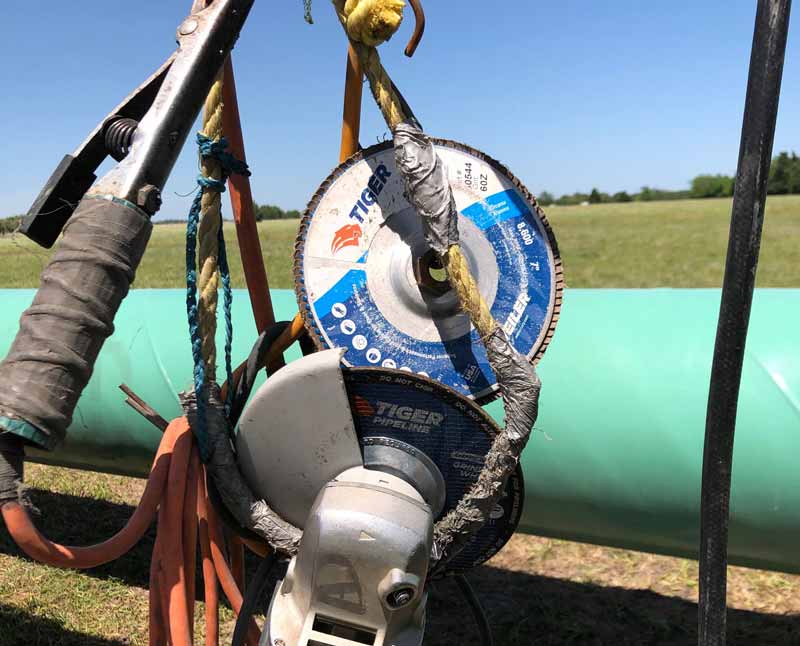
Partner With Weiler Abrasives For High-Quality Flap Discs
To gain quality surface conditioning solutions for your operations, work with Weiler Abrasives. Our experienced, knowledgeable teams can help you find the best flap discs for a grinder. Whether you need a flap disc for grinding steel, aluminum or cast iron, and whether you need a 2-inch mini disc for blending or a rugged 6-inch ceramic disc for your most demanding challenges, you'll find a product that works for your needs.
The benefits of a partnership with Weiler Abrasives extend far beyond your initial purchase. We offer a comprehensive Value Package designed to promote safety and support your flap disc use with insight and advice. The Value Package incorporates safety training to protect your employees as they use our tools and customized field support to answer your questions and help you get the most out of your flap disc.
Contact us today to learn about our flap discs' benefits for your angle grinders.
